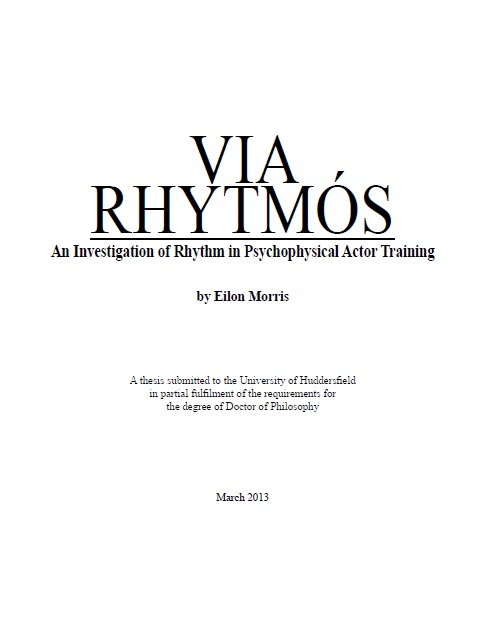E. Morris, Via Rhythmós. An Investigation of Rhythm in Psychophysical Actor Training, PhD Thesis, University of Huddersfield, 2012, 300 p.
of the melody. Forget the melody and understand
the pitch. Forget the pitch and understand the rhythm
(Zeami, [1424] 1984, p.103).
If we enter a space where actors train it is inevitable that we will encounter rhythm in one form or another. The training studio is a place where the rhythms of ritual, play and interpersonal relationship are both encouraged and celebrated. Actors involved in cyclic and alternating repetitions of movements and sounds, warm up and train their bodies, voices and attention. We hear the rhythms of music used to create a focused working environment, to invigorate and sustain the energy of a group, or establish a pulsation from which to work. We hear and see the rhythms of breath and patterns of walking feet, the prosody of speech and the flowing alternation of dialogue ; and we are aware of the synchronous coordination of an ensemble. We observe rhythm in the structuring and breaking down of scenes and movement scores into their constituent parts, and in the simple sequential and repetitious nature of a training routine. Rhythm informs almost every aspect of how actors train and yet for the most part little is understood about the nature of rhythm within this context or the specific benefits that rhythm offers actors. This thesis intends to address these issues by looking at the historical context from which these practices have emerged, at the use of rhythm in current practices, and at further potential applications of rhythm within this field. [...]

